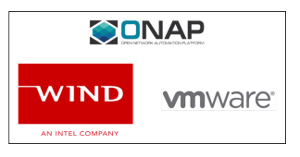Introducing edge services without ripping up your core network
Within the world of telecom, true ‘green field’ opportunities do not arise very often. When Elon Musk fires up a few Falcon Heavies and puts a thousand people on Mars who can’t live without Facebook, that will represent a green field (or orange field) opportunity for an enterprising service provider. Until then, most operators who roll out new services face the challenge of implementing them on top of existing networks.
Guest blog written by Charlie Ashton.
This topic is especially important for service providers exploring the new business opportunities enabled by edge compute. Applications like smart stadiums, augmented reality, Industrial IoT, connected vehicles and HD video all represent the opportunity to sell new kinds of services to new categories of customers, boosting top-line revenue and market share.
These innovative new applications can’t be hosted on standard centralised IT infrastructure. They need a purpose-built edge compute platform, specially designed to provide ultra-low latency performance, comprehensive device-to-cloud security, telco-grade uptime and support for small footprint configurations. Typically, the edge compute platform will be very different from the enterprise-class core infrastructure that is running in the service provider’s cloud data centre.
Cost-effective federation between distributed clouds is key to efficiently instantiating edge and core clouds based on cloud-agnostic abstraction. At Mobile World Congress in Barcelona next week, VMware and Wind River will join forces to demonstrate the kind of federation that makes this possible. Win River will also demonstrate the use of ONAP to orchestrate multi-tenant services running across multiple clouds.
 This MWC demo is the result of work done within the ONAP Multi-VIM / Cloud Project, for which both VMware and Wind River are leading contributors. The goal of this project is to enable ONAP to design and deploy cloud-agnostic infrastructure environments, for example OpenStack and its different distributions, public and private clouds and micro services containers.
This MWC demo is the result of work done within the ONAP Multi-VIM / Cloud Project, for which both VMware and Wind River are leading contributors. The goal of this project is to enable ONAP to design and deploy cloud-agnostic infrastructure environments, for example OpenStack and its different distributions, public and private clouds and micro services containers.
When you visit this demo at MWC, you’ll see ONAP orchestrating services that run in a federated configuration across two different clouds: Wind River Titanium Cloud at the edge and VMware vCloud NFV OpenStack Edition in the core.
In one use case, the service is a virtual CPE and in a second example, it’s a virtual IMS. In both scenarios, the edge component of the service runs on Wind River Titanium Cloud while the core component runs on VMware VIO. ONAP orchestrates and automates the flow of data between the edge and core clouds, controlling overall service provisioning and lifecycle management.
This kind of federation between heterogeneous networks (VMware VIO and Wind River Titanium Cloud) is exactly what is required for service providers as they look to extend their existing networks to add new, high-value edge services. It enables them to quickly deploy new services that boost their top line, while leaving their legacy core network infrastructure unchanged.
At MWC, you can see this federation demo in the Intel booth, number 3E31. While you’re there, you’ll also find Wind River products in action as part of demos as diverse as an air quality monitor, a smart city incorporating the FlexRAN virtual RAN platform and an open Broadband Remote Access Server (BRAS).
After visiting all the technology in the Intel booth, you’ll also find solutions based on Titanium Cloud in many of the customers’ and partners’ booths, including Advantech (#5L16MR), Amdocs with Altiostar (#3G10), China Mobile (#1F70), Chunghwa (#5A61), ITRI (#5A61), Lanner (#7E2), Ribbon Communications (#2I31), RIFT.io (#5J22) and Saguna (#5E41). You can see VMware’s solutions at #3K10.
Courtesy of Wind River.










